The item surfaced the City Clerk's website shortly before 5:00 p.m. Friday Sept 14, the minimal legal public notice for the Tuesday Sept. 17 Council meeting. LB's Municipal Code requires eight days notice of coming Council items unless three Councilmembers join in requesting minimal-notice, which Councilmembers Gonzalez, Price and Uranga did on this item. Several weeks ago during Council discussion of another item, lead-agendizer Pearce disclosed that an item on this subject was already scheduled for Sept. 17.
Sponsor | Sponsor |
The proposal stems from an October 11, 2016 Council vote (8-0, Mungo absent) on an item (also agendized on minimal notice) that requested a feasibility study of what it called "safe parking" homeless programs such as those in Santa Barbara and Monterey Bay. On June 1, 2017, LB's Director of Health & Human Services, Kelly Colopy, sent the Mayor/Council a ten page memo/feasibility report that stated in pertinent part:
...The main goals of a safe parking program are to move individuals who are residing in their cars, off of the street and into safe parking spaces, while simultaneously connecting them to basic essential services and making the connection to social service programs to transition them into permanent housing.To find best practices for this type of program, staff contacted representatives of several agencies operating safe parking programs, including:
- Seattle, WA (Road to Housing)
- Monterey, CA (One Starfish Parking Program)
- Santa Barbara, CA (New Beginnings)
- Ventura, CA (Safe Sleep Program)
- San Diego, CA (Dreams for Change)
REVIEW OF BEST PRACTICES
There are key similarities between the five safe parking programs studied:
All programs have the goal of transitioning people from residing in their cars to permanent housing by giving them a safe place to sleep, providing case management that connects them to services, and setting up a plan to move them to permanent housing.
- All programs are run by a non-profit agency and utilize a combination of community faith-based programs, non-profi1:s, private businesses, and city/county resources to supply the parking spots for clients.
- All programs report a well-developed relationship with the local police department.
- All but one of the programs operate only during the evening to early morning hours.
- Most programs do not allow RV parking as a part of their service.
Sponsor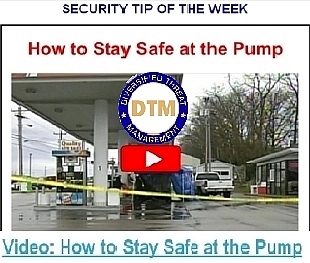 | 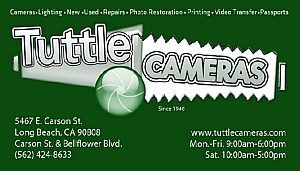 |
...BASIC ESSENTIAL SERVICES AND RELATED ISSUES
Hours of Operation: All but one program is open for a 12-hour period, 7 days per week. Clients can enter the lots between 6:00 p.m. and 7:00 p.m., and must leave the following morning between 6:00 a.m. and 7:00 a.m. The one exception from this system is Seattle, which allows the lots to be open 24 hours a day. This expanded access allows for intensive case management, with each client being visited by a case manager at least once per week. This is a cost-intensive program that employs four case managers for outreach and direct client contact.
Program Screening: Lot screening procedures are similar in nature. Most lots require clients to provide a current driver's license, current automobile registration, and proof of liability insurance. Most programs also screen for sex offenders, and felons with recent violent crimes. One program will not accept clients convicted of "cooking meth."
Another component of client screening involves residency in the city or county where the program is housed. The Monterey and Ventura programs only accept clients whose most recent residence is in their city. Others are not as strict, but are looking for participants who are from the local area. Most programs accept self-reporting for this element. San Diego does not have a requirement of this nature, but reports that 70 percent of their clients come from San Diego County, and 20 percent come from other California cities. None of the programs reported they felt as if participants were drawn to their cities as a result of the availability of their program.
Case Management: All programs researched had extensive case management components. Most programs have a non-profit "lead agency" that supplies case management and helps connect clients to other local programs and services. Case management check-in ranges from weekly to monthly. Two of the programs have case managers that visit clients on site. It should be noted that neither of these programs is directly connected to a larger continuum of care system in their cities. All programs emphasized that participation in the case management component was a strict rule of the program, and clients who are not actively working toward the goal of permanent housing are removed from the program.
Sponsor | Sponsor |
Sanitation: With few exceptions, sanitation costs for programs are borne by project funding. Delivering and maintaining portable toilets is a costly, but necessary, part of all safe parking programs. On some occasions, the host location is able to provide a restroom facility, but this only works if the restroom is accessible from the outside. There is a risk of portable toilets being used by people other than those in the program, but this was not mentioned as highly problematic for any of the programs. Placing the toilets away from streets and other easy access points keeps usage to lot patrons only.
Depending on the populations they encountered, some sites made sure to offer a handicapped restroom facility. This was not necessarily for ADA compliance, but rather to fulfill the needs of a certain client base. Some sites were not able to have portable sanitation onsite for various reasons. These sites simply referred clients to a nearby gas station or fast food facility. This approach, however, was only utilized by locations that had one or two spaces and, even then, it is difficult for the nearby businesses.
Security: The issue of security for these programs has generally not been as substantial as might be expected. Clients in lots tend to naturally take over the space and "self-police," ensuring the safety of their community from within. When issues do arise, the programs report that law enforcement is very responsive.
Different methodologies also serve to enhance security. In San Diego, for example, the case managers are on-site at each of the lots every-other-day from 5:30 to 9:30 p.m. This provides oversight and management of residents. Before the case managers leave, one of the residents is a designated "night person" who can help with any issues. This role rotates, with many clients proudly taking part. Both of the San Diego sites have gated facilities, which also aid in security.
Santa Barbara, a program with 23 different lots, employs two site monitors who make several rounds per night. They tag non-authorized vehicles and ask them to follow-up with staff to register with the program. They also provide a night emergency number for clients to use when problems arise. They have not had a big problem with neighbor complaints in business areas. Residential areas are more of a challenge, but not a consistent problem. The program coordinator feels that the individuals living in cars are easier to work with because they are usually higher functioning, have some form of employment, and are less likely to be challenged by mental health issues...
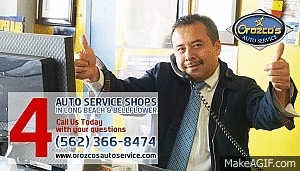 |
Other Concerns: Each agency was asked whether safe parking lots create magnets for both vehicular and non-vehicular persons. Many of the programs are in more outlying areas and have not experienced any significant problems in this regard. San Diego, which identified the largest problem, has the largest lots in predominantly urban areas. Case managers work with non-participants to identify and refer them to alternative resources. If non-participants do not respond, law enforcement will cite the offender. Most "overflow" vehicles promptly leave the area once approached.
Lot location is an essential component of any program. Clients need access to areas that will protect and empower, not further destabilize. Multiple program coordinators cautioned to take the time to put together the best program available, both for the clients and the surrounding community. Faith-based agencies, business lots, and other non-profit organizations are potential partners for this type of program, although it should be noted that most programs studied are heavily reliant on faith-based partnerships.
Notably, RV and car inhabitants are viewed as different types of populations. A large percentage of car inhabitants are employed, but do not earn enough to secure housing at market rates. This population is eager to find housing and is only using a vehicle as a temporary solution. Those in RVs are often working in better paying jobs, but see living in RVs as being "housed" and not homeless. Programs that provide special lots for RVs tend to relegate them to industrial areas away from other resources. This is one type of lot that can tend to have a "magnet" effect because people who cannot get into the program still want to be a part of the community. RVs placed in car lots seem to be best tolerated if only smaller units (less than 34 feet) are allowed and they are limited to one or two per lot.
ISSUES REGARDING FUNDING
Program funding for these programs range between $22,000 and $360,000 annually. It is difficult to establish an exact cost per individual client as each of these programs leverages their funding differently. For stand-alone programs, such as Road to Housing in Seattle, an annual $360,000 budget provides the full-cost of four full-time employees who engage in all aspects of case management and outreach. These case managers are the point of contact for all client engagement with programs and funding that is done through the program. Other programs utilize their case managers to refer clients to other available resources outside of the program at a much lower cost. This difference in approach results in the wide range of costs. Programs serve as an access point to a robust coordinated system of care and are not burdened with the high cost of delivering the service.
FEASIBILITY OF A LONG BEACH PROGRAM
The Long Beach CoC is organized through the Multi-Service Center (MSC), which is an integrated and coordinated system that provides all of the services needed to help participants move into stable housing. Over a dozen partner agencies operate at the MSC, working together to holistically address the needs of those accessing the center. The strong relationship between all of the partners in the CoC means that clients, each with their own unique set of needs, have access to a system that is designed to identify the appropriate services for each household.
For clients who may not have access to the MSC and its resources, a well-executed transitional parking program could provide access to a robust system that could help take care of immediate needs as well as help find more permanent solutions. Unlike some programs in the study, any transitional program in Long Beach could be fully integrated into the CoC system of care, thus maximizing resources and improving outcomes for those experiencing vehicular homelessness. The Safe Parking program would require full fiscal support to meet its goals and objectives. The Safe Parking program model is not eligible for funding under Continuum of Care and Emergency Solution Grants, and would require a new funding source. Safe Parking programs are not currently an allowable use of Measure H funds.
Representatives from the Health Department, Second District Council Office, and nine faithbased agencies met in March 2016 to determine the interest and feasibility of utilizing local church parking lots for a Long Beach transitional parking program. This initial meeting was a forum for the faith-based agencies to ask questions and get an initial feel about how a transitional parking program might operate in Long Beach. It was also an opportunity for representatives to determine how many spaces might be available and what services and programs churches were already providing.
- Initial findings indicated that faith-based agencies interested in participating were willing to host two to five cars at a time.
- All agencies indicated they would need to have portable toilet facilities provided at their location for client use.
- Services available at faith-based agencies range from weekly food pantries to community meals. Some churches also indicated they host Narcotics Anonymous and Alcoholics Anonymous meetings.
- Faith-based agencies indicated the need to educate their congregations and surrounding communities about the real issues of homelessness and how to work with them. They also indicated enthusiasm for learning how to better utilize the City's MSC and its available programs.
- There will be a cost to some of the congregations as they currently rent out vacant parking spaces.
- Some congregations are already "letting" cars park overnight in their lots to assist individuals who are in need.
Program coordinators from the study advised that each faith-based community is going to have a different threshold for client interaction. Some congregations are comfortable providing meals and clothing to clients on a regular basis. Others look at needs on a client-to-client basis, helping with things ranging from school supplies to gas cards. Many of their programs do a Holiday collection for clients. Program Coordinators cautioned that strong boundaries should be put into place at the beginning of the program. Congregations that jump in and try to provide too many services can become compassion-fatigued and quickly drain the life out of the program. These recommendations from other programs should be taken into account for any program developed.
As existing programs demonstrate, there are a variety of methods to implement a safe or transitional parking program. Although stand-alone programs comprise much of the study, Long Beach is uniquely positioned to utilize a transitional program as an entry point into an already robust coordinated system of programs and services.
FISCAL IMPACT
The proposed budget for a Safe Parking program in Long Beach would consist of three main categories: personnel, operations and indirect costs. The total estimated cost of the proposed program is $220,942, and includes:
- Personnel expenses are estimated at $112,500, and would support one full-time Outreach Worker, one full-time Case Manager, and a portion of supervising staff salary. This cost estimate is based on an average cost for non-profit agencies who currently subcontract with the City.
- Operations and supplies comprise a total of $88,356, which will fund costs relating to security, sanitation and refuse costs, program supplies, parking lot rental, supplies for incentives, and technology supports for reporting outcomes.
- Standard indirect costs for subcontracted agencies is capped at 10 percent, a total of $20,086. The proposed program is not an allowable funding category under the Continuum of Care Emergency Solution Grants, or Measure H funding. If funded, the program would be a 12-month pilot that is coordinated with faith-based and community partners. During the pilot program phase, up to 20 parking spaces among lots could be used. Each site would be equipped with Porta-Potties and provide enhanced refuse collection service. A participant's stay in the program is contingent upon participation in case management and progress on their individual housing plan.
A Letter of Interest (LOI) to solicit potential community partners for program implementation could be used. If sufficient interest is expressed, a Request for Proposals (RFP) would be issued to select a provider. The RFP would determine the potential locations and number of spots available.
The RFP process would include information to identify partners that:
- Have experience serving people experiencing homelessness;
- Have experience working with street homeless populations;
- Have experience operating similar programs;
- Are willing to work with other agencies to determine appropriate sites for parking, including faith-based organizations, privately-held facilities and government-owned properties;
- Are able to communicate the program to the target population;
- Will connect participants to the MSC and Coordinated Entry System as a condition of program participation;
- Enforce eligibility requirements of participants as required by HUD and the Homeless Services Division; and,
- Participate in the citywide Street Outreach Network.
Health and Human Services staff would also work with the City Attorney and Development Services to ensure there is an appropriate legal framework that allows for overnight dwelling in faith-based, non-profit and City lots. Staff will work with these same personnel to develop a streamlined permitting process to allow for non-profit and faith-based organizations to opt-in as lot providers while the program is being developed.
Developing.
| Support really independent news in Long Beach. No one in LBREPORT.com's ownership, reporting or editorial decision-making has ties to incumbent Long Beach officials, development interests, advocacy groups or other special interests; or is seeking or receiving benefits of City development-related decisions; or holds a City Hall appointive position; or has contributed sums to political campaigns for Long Beach incumbents or challengers. LBREPORT.com isn't part of an out of town corporate cluster and no one its ownership, editorial or publishing decision making has been part of the governing board of any City government body or other entity on whose policies we report. LBREPORT.com is reader and advertiser supported. You can help keep really independent news in LB similar to the way people support NPR and PBS stations. We're not |
blog comments powered by Disqus
Recommend LBREPORT.com to your Facebook friends:
Follow LBReport.com with:
RSS |
Contact us: mail@LBReport.com
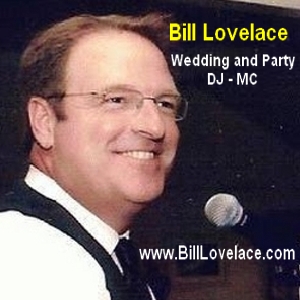

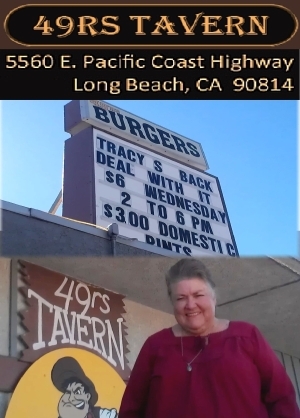


Hardwood Floor Specialists
Call (562) 422-2800 or (714) 836-7050
